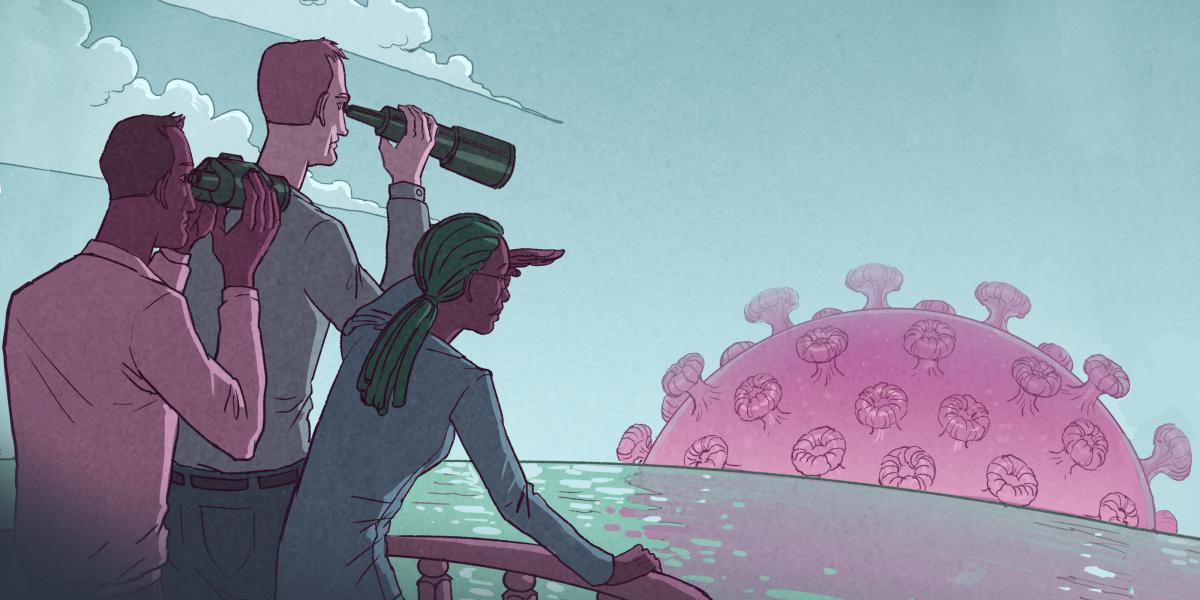Preparing for the Next Pandemic
Big biological threats over the last couple decades have taught us one thing: More are on the way.
In 1998, D.A. Henderson delivered a stark warning during a speech on the Johns Hopkins campus. It changed my life.
A former dean of the School of Public Health and leader of WHO’s global smallpox eradication program, D.A. had an extraordinary perspective on epidemic threats. And he was worried. Emerging pathogens were continually probing weaknesses in humans and societies. Big biological events, whether manmade or natural, were inevitable. And the U.S. and other countries were badly unprepared. How could medicines and vaccines be developed more rapidly? How could hospitals get prepared for infectious disease crises? How quickly would surveillance systems recognize new outbreaks?
I was an Infectious Diseases Fellow at the Johns Hopkins School of Medicine at the time and had long been drawn to the study of epidemics. After D.A.’s speech, I introduced myself and volunteered to help with his work. He soon invited me to work with him on a report on U.S. preparedness. Within a year, he decided to start a new Hopkins center focused on strengthening the country’s capacity to prevent and respond to biological threats. He asked me to join him, and I did.
New infectious diseases appeared in quick succession after the Center launched. In 1999, West Nile Virus surfaced in New York City and exposed major challenges around disease surveillance and the divide that needed to be bridged between human and animal health. In 2001, the anthrax letters followed 9/11. They illustrated how poorly prepared the U.S. was to cope with even a small-scale use of a biological weapon. And new infectious disease threats continued to emerge, including SARS in 2003–04, H5N1 in 2005, H1N1 in 2009, MERS-CoV in 2012, Ebola in West Africa in 2013–14 (and in the DRC in 2018), and Zika in 2015. Each revealed new gaps in national and global preparedness.
Over the years, our Center’s team has grown to include researchers and practitioners in science, medicine, public health, government, law, social sciences, economics, and national security. We study the tools, organizations, systems, and policies needed to prevent and respond to infectious disease threats with a high priority on strengthening national and international policies and programs. We focus on naturally occurring epidemics as well as those that could be started accidentally or through deliberate use of a biological weapon. We conduct research and analysis, work to educate policymakers, and bring together experts and leaders to solve problems and find consensus. We convene international scientific dialogues with senior government officials and scientists aimed at improving understanding and collaboration around biological threats. And we are excited to have recently been named a WHO Collaborating Centre for Global Health Security.
One way we to try to shine a light on major infectious disease challenges and provoke action is through high-level tabletop exercises. Policymakers’ attention to these issues waxes and wanes, and we’ve found that exercises can powerfully engage them and explain complex issues.
In October 2019, with the World Economic Forum and the Bill & Melinda Gates Foundation, we held an exercise in New York. Event 201 simulated the international response to a fast-moving pandemic started by a novel coronavirus. Global business, government, and public health leaders were confronted with a fictional pandemic that caused substantial loss of life and major economic and societal disruption. We published our recommendations and call to action from that fictional coronavirus exercise in mid-January. That same week, China confirmed human-to-human transmission of the very real coronavirus, SARS-CoV-2, and announced the largest quarantine in history in Wuhan.
Since the pandemic’s early days, our Center has been focused intently on helping to improve the preparation for and response to COVID-19. We warned in January that the U.S. and other countries needed to get prepared for a pandemic. We’ve published a series of reports aimed at policymakers on social distancing; reopening; guidance to governors; risk assessment for businesses; the needed research agenda for schools; serology and diagnostic testing; health care system impact and recovery; and more. We briefed members of Congress, governors, mayors, international leaders, and public and private organizations. We testified before five different committees on Capitol Hill. And the media has turned to us for insight since the pandemic’s start.
Our Center will continue its work to lessen the overall impact of COVID-19. Later, we’ll also look at what’s gone right and wrong, and we’ll consider how the U.S. and other countries can be far better prepared for the next event like this.
We lost D.A. Henderson in 2016, but if he were here today, I think he would say that the world must get much better at dealing with epidemics because big ones like COVID-19 will keep coming in the future.
My colleagues and I are resolved to doing all we can to make that happen.
